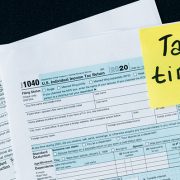Law change affects moving, mileage and travel expenses
The Internal Revenue Service today provided information to taxpayers and employers about changes from the Tax Cuts and Jobs Act that affect:
- Move related vehicle expenses
- Un-reimbursed employee expenses
- Vehicle expensing
Changes to the deduction for move-related vehicle expenses
The Tax Cuts and Jobs Act suspends the deduction for moving expenses for tax years beginning after Dec. 31, 2017, and goes through Jan. 1, 2026. Thus, during the suspension no deduction is allowed for use of an automobile as part of a move using the mileage rate listed in Notice 2018-03. This suspension does not apply to members of the Armed Forces of the United States on active duty who move pursuant to a military order related to a permanent change of station.
Changes to the deduction for un-reimbursed employee expenses
The Tax Cuts and Jobs Act also suspends all miscellaneous itemized deductions that are subject to the 2 percent of adjusted gross income floor. This change affects un-reimbursed employee expenses such as uniforms, union dues and the deduction for business-related meals, entertainment and travel.
Thus, the business standard mileage rate listed in Notice 2018-03, which was issued before the Tax Cuts and Jobs Act passed, cannot be used to claim an itemized deduction for un-reimbursed employee travel expenses in taxable years beginning after Dec. 31, 2017, and before Jan. 1, 2026. The IRS issued revised guidance today in Notice 2018-42.
Standard mileage rates for 2018
As mentioned in Notice 2018-03, the standard mileage rates for the use of a car, van, pickup or panel truck for 2018 remain:
- 54.5 cents for every mile of business travel driven, a 1 cent increase from 2017.
- 18 cents per mile driven for medical purposes, a 1 cent increase from 2017.
- 14 cents per mile driven in service of charitable organizations, which is set by statute and remains unchanged.
The standard mileage rate for business is based on an annual study of the fixed and variable costs of operating an automobile. The rate for medical purposes is based on the variable costs.
Taxpayers always have the option of calculating the actual costs of using their vehicle rather than using the standard mileage rates.
A taxpayer may not use the business standard mileage rate for a vehicle after using any depreciation method under the Modified Accelerated Cost Recovery System or after claiming a Section 179 deduction for that vehicle. In addition, the business standard mileage rate cannot be used for more than four vehicles used simultaneously.
Increased depreciation limits
The Tax Cuts and Jobs Act increases the depreciation limitations for passenger automobiles placed in service after Dec. 31, 2017, for purposes of computing the allowance under a fixed and variable rate plan. The maximum standard automobile cost may not exceed $50,000 for passenger automobiles, trucks and vans placed in service after Dec. 31, 2017. Previously, the maximum standard automobile cost was $27,300 for passenger automobiles and $31,000 for trucks and vans.
More information
Notice 2018-42 is posted on IRS.gov and contains information about the update to the standard mileage rates, including the details about the suspension of the deduction for operating a vehicle for moving purposes.
SOURCE: IRS – https://www.irs.gov/newsroom/law-change-affects-moving-mileage-and-travel-expenses













